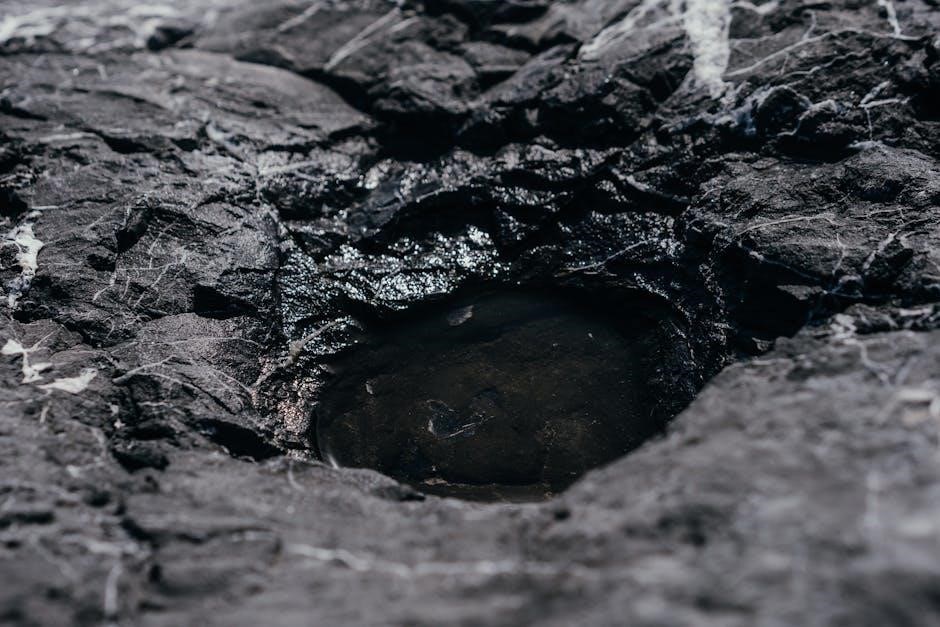
The Mohs Scale of Mineral Hardness, created by Friedrich Mohs in 1812, is a simple, effective tool for determining mineral scratch resistance. This guide is essential for geology students and professionals, providing a clear understanding of mineral hardness and its applications in various fields, now available as a downloadable PDF resource.
Overview of the Mohs Scale
The Mohs Scale of Mineral Hardness is a widely used, qualitative ordinal scale ranging from 1 (softest) to 10 (hardest). Developed by Friedrich Mohs in 1812, it measures a mineral’s scratch resistance. Minerals with higher numbers can scratch those with lower ratings. This simple yet effective system aids geologists, gemologists, and enthusiasts in identifying and comparing minerals based on their hardness. It remains a cornerstone in mineralogy and geology studies.
Importance of Mineral Hardness in Geology
Mineral hardness is a critical property in geology, aiding in mineral identification, classification, and understanding geological processes. The Mohs Scale provides a practical framework for assessing scratch resistance, which is essential for distinguishing between minerals and predicting their behavior in industrial and natural environments. This property is vital for evaluating gemstones, constructing materials, and studying Earth’s mineral composition.
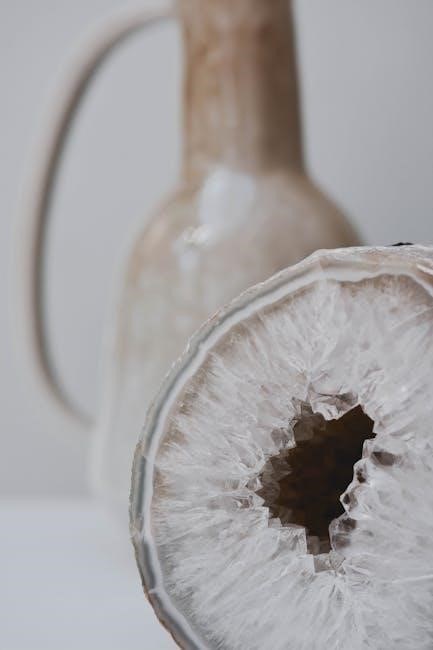
What is the Mohs Scale of Mineral Hardness?
The Mohs Scale of Mineral Hardness, created by Friedrich Mohs in 1812, is a qualitative ordinal scale ranging from 1 to 10, measuring scratch resistance of minerals. It is a practical tool for mineral identification and classification based on scratch resistance.
Definition and History
The Mohs Scale of Mineral Hardness is a qualitative ordinal scale defining scratch resistance of minerals, ranging from 1 (softest) to 10 (hardest). Introduced by Friedrich Mohs in 1812, it provides a straightforward method to classify minerals based on their ability to resist scratching by other substances. This system remains a fundamental tool in geology for identifying and understanding mineral properties.
Key Characteristics of the Scale
The Mohs Scale ranks minerals from 1 to 10 based on scratch resistance, with higher numbers indicating greater hardness. It uses reference minerals like talc (1) and diamond (10). This scale is ordinal, meaning it compares relative hardness but doesn’t quantify absolute hardness. Its simplicity makes it a practical tool for fieldwork and mineral identification, widely used in geology and mineralogy.
How the Mohs Scale Works
The Mohs Scale determines mineral hardness through scratch testing, where a mineral’s ability to scratch another determines its rank. Developed by Friedrich Mohs, it provides a simple, practical method for comparing scratch resistance, making it a valuable tool in geology and mineralogy for quick field assessments.
Scratch Testing Method
The scratch testing method involves determining a mineral’s hardness by testing its ability to scratch another mineral. If a mineral can scratch a substance with a higher Mohs rating, it is harder. This practical technique relies on comparing known and unknown minerals, providing a straightforward, non-destructive way to assess hardness. Its simplicity makes it a widely used tool in geology for quick field assessments and mineral identification.
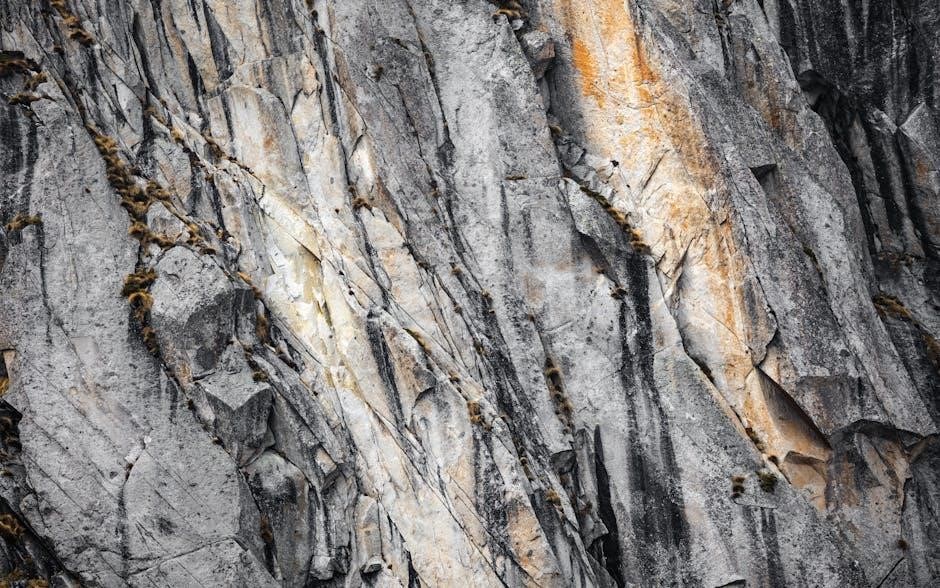
Examples of Minerals on the Scale
The Mohs Scale includes specific minerals, such as talc (1), gypsum (2), calcite (3), fluorite (4), apatite (5), orthoclase (6), quartz (7), topaz (8), corundum (9), and diamond (10). These minerals serve as reference points for determining the hardness of unknown specimens, making the scale a practical tool for mineral identification and classification in geology and gemology. This structured approach simplifies hardness comparison and analysis.
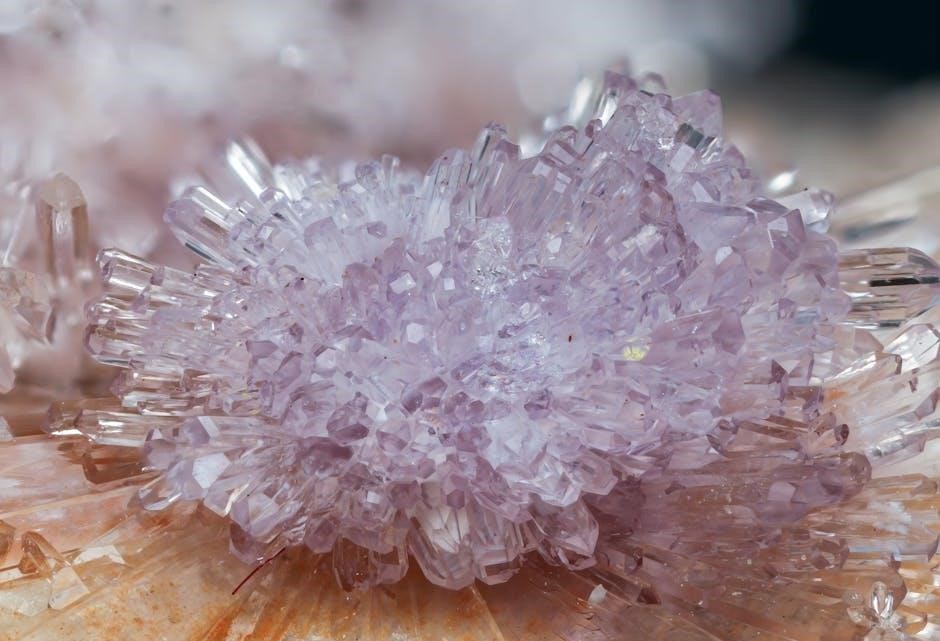
Minerals on the Mohs Scale
The Mohs Scale features ten reference minerals, from talc (1) to diamond (10), providing a standardized system to determine mineral hardness and facilitate identification in geological studies.
List of Minerals and Their Hardness Ratings
The Mohs Scale categorizes minerals by hardness, with talc (1), gypsum (2), calcite (3), fluorite (4), apatite (5), orthoclase (6), quartz (7), topaz (8), corundum (9), and diamond (10). This gradation helps identify minerals based on their scratch resistance, making it a practical tool for field geologists and researchers alike.
Common Minerals and Their Uses
Quartz (7 on Mohs Scale) is widely used in electronics and optics. Calcite (3) is essential in construction materials like cement. Gypsum (2) is used in plaster and drywall. Orthoclase (6) is utilized in ceramics and glass production. These minerals, each with unique hardness ratings, play critical roles in various industries, showcasing the practical applications of the Mohs Scale in identifying and utilizing natural resources effectively.
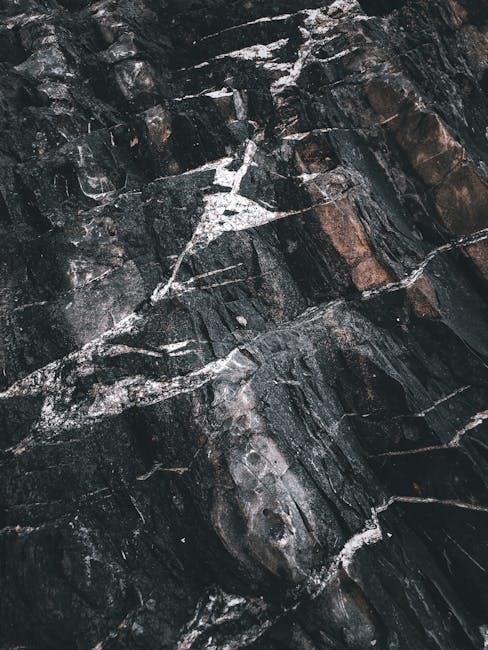
Applications of the Mohs Scale
The Mohs Scale is widely used in geology, mineralogy, and industry to identify minerals and assess their scratch resistance, aiding in resource extraction, gemstone identification, and material selection for various industrial applications.
In Geology and Mineralogy
The Mohs Scale is a fundamental tool in geology and mineralogy for identifying minerals based on their scratch resistance. Developed by Friedrich Mohs in 1812, it helps determine a mineral’s hardness, which is crucial for understanding its composition and properties. This method is simple, cost-effective, and widely used in fieldwork and laboratories. It also aids in scientific research, enabling the classification and study of minerals, making it indispensable for geologists and mineralogists worldwide.
In Industry and Gemstone Identification
The Mohs Scale is widely used in industries and gemstone identification to assess scratch resistance and durability. It helps evaluate gemstone quality for jewelry and determines suitable materials for industrial applications. This scale is crucial for maintaining equipment and preventing damage in manufacturing processes. Its practicality makes it a valuable tool in materials science and industrial operations, ensuring cost-effective and reliable solutions.
Mohs Scale of Mineral Hardness PDF Guide
A comprehensive guide detailing the Mohs Scale, its history, and applications. Perfect for students and professionals, this PDF offers a quick reference for mineral identification and scratch testing.
How to Use the Scale for Mineral Identification
Using the Mohs Scale involves scratch testing minerals against known reference samples. Start with softer minerals like talc (1) and progress to harder ones like diamond (10). If a mineral can scratch another, it has a higher hardness rating. This method is simple, effective, and widely used in field geology for quick mineral identification without advanced equipment.
Downloadable Resources and Charts
Downloadable PDF guides and charts of the Mohs Scale provide a quick reference for identifying minerals based on their hardness. These resources include detailed tables listing minerals, their hardness ratings, and comparative scratch resistance. Visual charts and diagrams further simplify understanding, making them invaluable for geologists, students, and researchers. Accessible online, these tools enhance mineral identification and fieldwork efficiency.
Comparison with Other Hardness Tests
The Mohs Scale differs from absolute hardness tests like the Vickers or Rockwell scales by focusing solely on scratch resistance. This method is practical yet limited compared to more precise measurements, making it a valuable yet distinct tool in mineralogy.
Differences from Absolute Hardness Measurements
The Mohs Scale assesses scratch resistance qualitatively, ranking minerals from 1 to 10. Unlike absolute hardness tests, which provide precise numerical values, Mohs is relative, comparing minerals directly. This makes it practical for fieldwork but less accurate for scientific research requiring exact measurements, limiting its use in advanced material science applications.
Advantages and Limitations
The Mohs Scale offers simplicity and portability, making it ideal for quick field identification. Its reliance on scratch testing is cost-effective and requires no specialized tools. However, it lacks precision, as it measures relative hardness rather than absolute values. This limits its utility in advanced research, where more accurate methods like Vickers hardness are preferred for detailed material analysis and engineering applications.
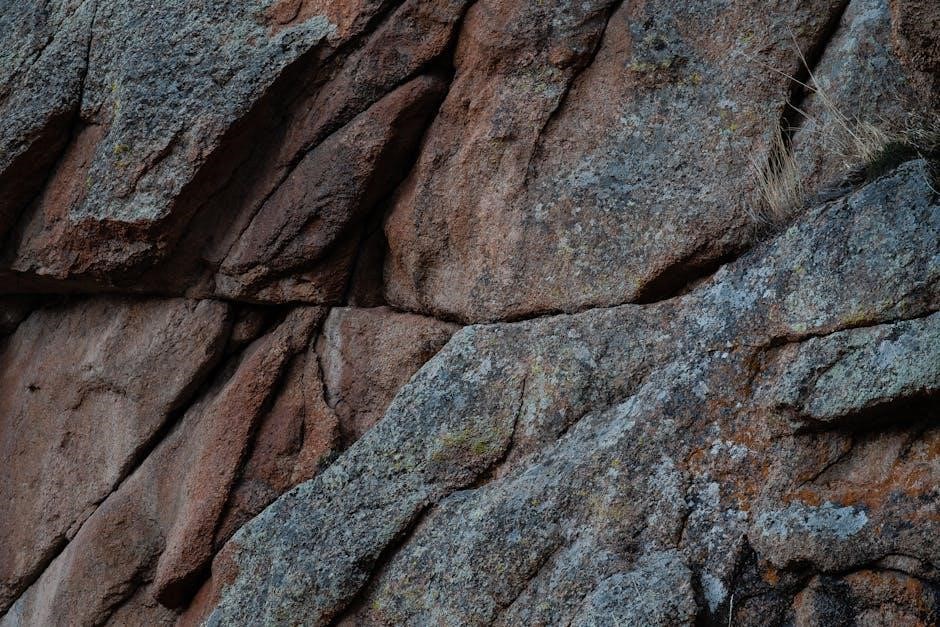
Common Misconceptions About the Mohs Scale
A common myth is that the Mohs Scale measures absolute hardness, when it actually ranks minerals based on scratch resistance. It is not a precise scientific measure but a practical, relative tool for field identification and comparison.
Myths vs. Facts
Many believe the Mohs Scale measures absolute hardness, but it actually ranks minerals by scratch resistance. Another myth is that it applies only to minerals, when it also includes gemstones and synthetic materials. Some think higher hardness means better durability, but other factors like cleavage and fracture also influence a mineral’s overall resilience. Understanding these distinctions is crucial for accurate mineral identification and property assessment.
Understanding Scratch Resistance
Scratch resistance, as defined by the Mohs Scale, measures a mineral’s ability to resist being scratched by another material. Minerals with higher rankings can scratch those below them on the scale. For example, quartz (7) can scratch calcite (3), but not vice versa. This relative measure helps identify minerals based on their hardness, providing a practical tool for fieldwork and laboratory analysis. It is a key diagnostic property in geology and mineralogy.

Practical Uses of the Mohs Scale
The Mohs Scale is widely used in geology, education, and industry for identifying minerals and determining their scratch resistance in fieldwork, education, and industrial applications.
In Everyday Life
The Mohs Scale impacts daily life through applications in dentistry, where tooth enamel’s hardness (5 on the scale) influences oral care, and in jewelry, where gemstone durability is assessed for wear. Understanding mineral hardness helps in material selection, from countertops to industrial tools, ensuring longevity and performance in various domestic and professional settings.
In Scientific Research
In scientific research, the Mohs Scale aids mineralogists in identifying and categorizing minerals based on scratch resistance. This qualitative method supports comparative studies and enhances the accuracy of mineral classification. By providing a standardized framework, the scale facilitates advancements in geology, materials science, and gemology, ensuring consistent and reliable data across diverse studies and applications.
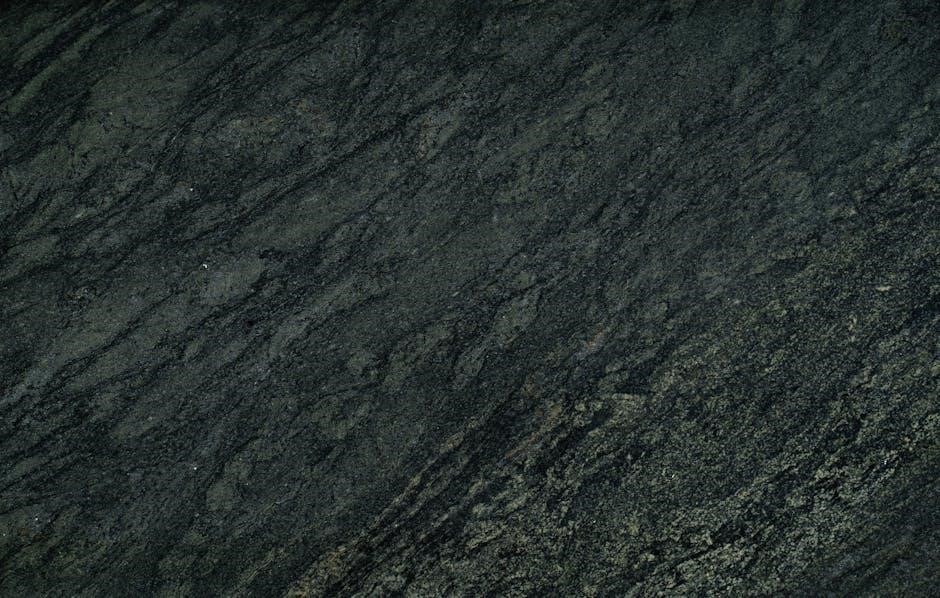
The Mohs Scale of Mineral Hardness remains a vital tool in geology and mineralogy, offering a simple yet effective method for understanding scratch resistance and mineral properties.
The Mohs Scale of Mineral Hardness, developed by Friedrich Mohs in 1812, ranks minerals from 1 (talc) to 10 (diamond) based on scratch resistance. It is widely used in geology and mineralogy to identify and classify minerals. The scale is simple, cost-effective, and provides a practical framework for understanding mineral properties. A downloadable PDF guide offers detailed charts and lists of minerals, enhancing its utility for both professionals and enthusiasts. This resource is invaluable for fieldwork, education, and research, making it a cornerstone in the study of minerals.
Final Thoughts on the Importance of the Mohs Scale
The Mohs Scale of Mineral Hardness remains a cornerstone in geology and mineralogy, offering a simple yet effective method for identifying and comparing minerals. Its widespread use in education, research, and industry underscores its enduring relevance. As a downloadable PDF guide, it continues to empower scientists and enthusiasts alike, ensuring its legacy as a vital tool for understanding the natural world. Its accessibility and practicality make it an indispensable resource for generations to come.